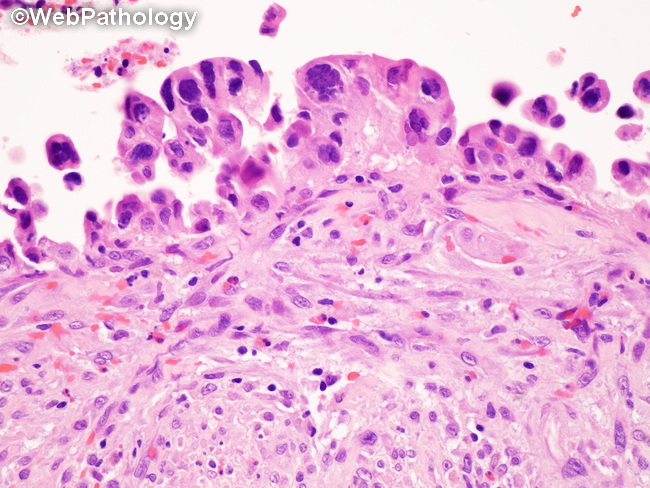Gallbladder Dysplasia vs Reactive Changes


Comments:
Features favoring dysplasia over reactive changes: 1) dysplastic changes are often extensive; 2) architectural patterns like papillary/micropapillary, tufting, cribriform, and glandular are more common in dysplasia; 3) cytologic features such as loss of cellular polarity, monotonous cells, enlarged hyperchromatic nuclei, and prominent nucleoli favor dysplasia. Features favoring reactive changes over dysplasia: 1) mild nuclear atypia and pseudostratification, no nuclear enlargement, and no loss of polarity; 2) smooth nuclear contours and finely dispersed chromatin; 3) stromal hemorrhage; 4) lack of architectural patterns mentioned above; 5) basophilia in deeper aspect of the epithelium but with surface maturation; 6) atypia is focal in a background of well-preserved non-dysplastic epithelium. NOTE: Inflammatory cells and increased mitotic activity (including atypical forms) can be seen in both dysplasia and reactive changes (in areas of inflammation/regeneration) and cannot be used to distinguish between the two. The image shows high-grade dysplasia.



